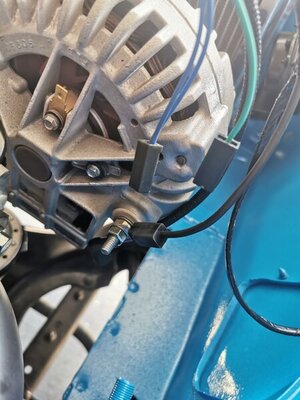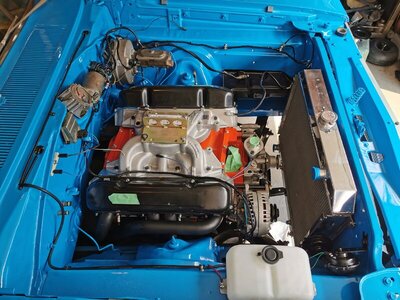Mark1972
Well-Known Member
This is likely the first of a few questions regarding wiring up my 1970 Satellite now that the 440 is in. I ordered a new engine wiring harness from Classic Industries. I also have a wiring diagram for my car. The wiring diagram shows a dark green wire going to field, and a dark blue wire goes to field, and then the battery wire(black)gets pinched between the two nuts. That's what my old harness was like, except when I hooked up the alternator wires with the old motor, I must have had the blue and green wires backwards, because it melted the wire. I replaced it, switched the wires, and no more problems. Now I've got the new wiring harness, and there are two blue wires going together into one connector, the lone green, and of course the battery wire. The diagram says both go to field, but doesn't specify which. Having melted the wires before, I don't want to make the same mistake again. So my questions are:
Why two blue wires instead of one on the old harness?
Why are the two field poles not marked specifically when they are obviously not the same?
Automotive electrical is a huge weak spot for me. I'm sure there is a simple answer. Thanks for the help.

Why two blue wires instead of one on the old harness?
Why are the two field poles not marked specifically when they are obviously not the same?
Automotive electrical is a huge weak spot for me. I'm sure there is a simple answer. Thanks for the help.

















